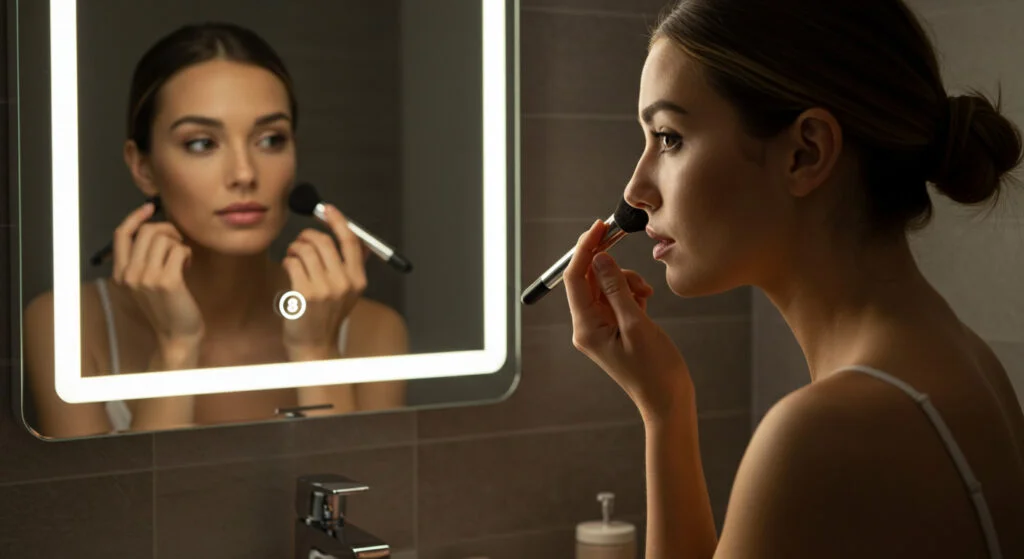Introduction
Have you ever applied your makeup at home, only to step outside and realize your foundation looks too light, your contour too harsh, or your eyeshadow uneven? The culprit is often lighting. The type, intensity, and direction of light can drastically change how makeup appears, making it essential to understand lighting conditions when applying cosmetics.
This article explains the role of lighting in makeup application, common mistakes caused by poor lighting, and tips for achieving flawless results every time.
Why Lighting Matters in Makeup
Makeup is all about blending, balance, and harmony of colors. Poor lighting can:
- Distort shades of foundation, blush, and eyeshadow.
- Make blending errors invisible until viewed in natural light.
- Cause makeup to appear heavier or lighter than intended.
Good lighting ensures precision and a natural finish.
Types of Lighting and Their Effects
1. Natural Daylight
- Best for makeup application.
- Shows true skin tone and makeup shades.
- Balanced, white light prevents color distortion.
- Tip: Apply makeup near a window for the most accurate results.
2. Fluorescent Lighting
- Common in offices and public spaces.
- Often harsh and cool-toned, making skin look pale or washed out.
- May cause you to apply too much makeup to compensate.
3. Incandescent/Yellow Lighting
- Warm and flattering but not color-accurate.
- Can make skin look healthier but may distort foundation shades.
- May cause under-blending because imperfections appear softer.
4. LED Lighting
- Modern LEDs can mimic daylight if chosen correctly.
- Adjustable LED mirrors are excellent for home use.
- Look for “daylight” or “neutral white” LEDs with 5000–6500K temperature range.
5. Candlelight or Dim Lighting
- Romantic but poor for accuracy.
- Shadows obscure blending and detail.
- Often leads to uneven application.
Direction of Light Matters Too
- Overhead lighting: Creates shadows, especially under the eyes and chin.
- Side lighting: Uneven and distorts symmetry.
- Front-facing light: Best for balanced, shadow-free application.
Common Makeup Mistakes from Poor Lighting
- Foundation line visible at the jaw.
- Harsh contour or blush placement.
- Eyeshadow that looks uneven in daylight.
- Lipstick appearing darker or lighter than expected.
How to Create the Perfect Makeup Lighting Setup
- Use a lighted vanity mirror with daylight LED bulbs.
- Place lights in front of your face, not above or behind.
- Aim for even, diffused lighting to avoid shadows.
- If possible, apply makeup during the day in natural sunlight.
Conclusion
Lighting can make or break your makeup look. While natural daylight is the gold standard, high-quality LED lighting is the next best option for everyday use. By understanding how different types of light affect your application, you’ll avoid common mistakes and achieve a flawless, natural finish every time.
FAQs
Q1: What is the best lighting for makeup application?
Natural daylight or daylight-mimicking LEDs (5000–6500K).
Q2: Why does my foundation look different outside?
Indoor lighting distorts color, while natural light shows the true shade.
Q3: Should I use a ring light for makeup?
Yes. Ring lights provide even, shadow-free illumination similar to daylight.
Q4: Can bad lighting make me over-apply makeup?
Yes. Harsh or dim lighting often leads to heavier application.
Q5: What’s the worst lighting for makeup?
Fluorescent and dim lighting, as they distort color and hide blending mistakes.

